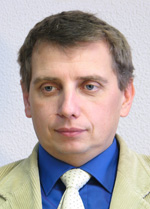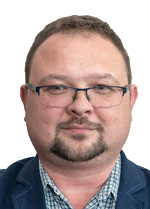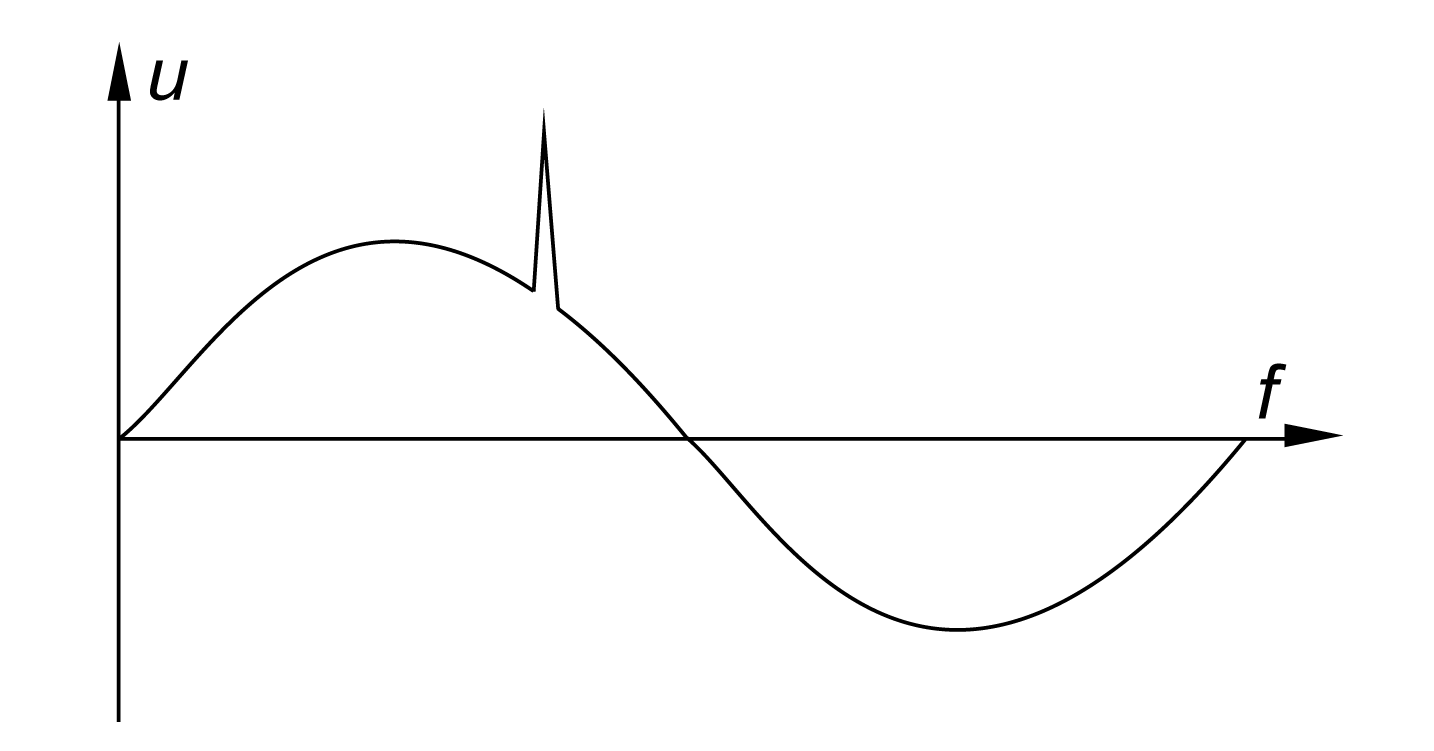E-pismo dla elektryków i elektroników
AUTOMATYKA, ELEKTRYKA, ZAKŁÓCENIA
vol. 1, Nr 1 (1) 2010
Ocena jakości energii elektrycznej w sieciach przemysłowych
Power Quality Assessment in Industrial Systems
dr inż. Edward MUSIAŁ
Abstract
In economic terms, electricity (both power and energy) is a commodity. Its quantity and quality is subject to thorough evaluation. Power quality determines the parameters of electrical power in consumer devices. The article presents the power quality indices and the criteria for their evaluation: frequency and voltage deviations, fluctuations and transients, voltage dips and distortion, supply interruptions. It also emphasises the fact that it is the customers themselves who contribute to power quality degradation.
Streszczenie
Energia elektryczna to przedmiot rozważań z różnych punktów widzenia. Można ją rozpatrywać m.in. jako produkt i jako towar, czyli przedmiot transakcji zakupu i sprzedaży. Podobnie jak w przypadku innych towarów, przedmiotem transakcji powinny być zarówno ilość, jak i parametry jakościowe produktu. W warunkach rynku konkurencyjnego, przy większych kontraktach parametry jakościowe energii powinny być negocjowane przez zainteresowane strony, przy czym wyższa jakość może mieć wyższą cenę. Na rynku producenta, od którego odchodzimy, nabywca z konieczności akceptował zastane parametry jakościowe energii, w tym restrykcyjne wyłączenia i celowe zaniżanie napięcia, a nawet zaniżanie częstotliwości, dla zmniejszenia zapotrzebowania na moc.
Keywords
power quality indices, frequency deviation, voltage deviation and dips, voltage fluctuation and flicker, overvoltages voltage unbalance, continuity of service, voltage distortion.
Słowa kluczowe
wskaźniki jakości energii, odchylenia częstotliwości, odchylenia i zapady napięcia, wahania napięcia i migotanie światła, przepięcia, niesymetria napięcia, przerwy w zasilaniu, odkształcenie napięcia.
Rys. / Fig.
Bibliografia / Bilbiography
[1] Afonso J., Couto C., Martines J.: „Active filter with control based on the p-q theory”, IEEE Industrial Electronics Society Newsletter, Vol. 47, No. 3,
September 2000.
[2] Akagi H., Kanazawa Y., Nabae A. Fujita K.: „Generalized theory of the instantaneous reactive power and its application”, Electrical Engineering in
Japan, Vol. 103, No. 4, pp. 58-65, 1983.
[3] Akagi H., Kanazawa Y., Nabae A.: „Generalized theory of the instantaneous reactive power in three-phase circuits”, Proc. of the Int. Power Electron.
Conf., (JIEE IPEC), pp. 1375-1386, Tokyo/Japan 1983.
[4] Akagi H., Kanazawa Y., Nabae A.: „Instantaneous reactive power compensators comprising switching devices without energy storage components”,
IEEE Trans. on Industry Applications, Vol. IA-20, No. 3, pp. 625-631, May/June 1984.
[5] Akagi H., Nabae A.: „The p-q theory in three-phase systems under non-sinusoidal conditions”, ETEP, Vol. 3, No. 1, pp. 27-31, January/February
1993.
[6] Akagi H., Watanabe E. H., Aredes M.: „The p-q theory for active filter control: some problems and solutions”, Sba Controle & Automação, Vol.15,
No.1, pp. 78-84, ISSN 0103-1759, Jan./Mar. 2004.
[7] Aredes M., Watanabe E. H.: „Compensation of non-periodic currents using the instantaneous power theory”, IEEE PES Summer Meeting, Seatle,
pp. 994-998, July 2000.
[8] Aredes M.: „Active power line conditioners”, Dr.-Ing. Thesis, Technische Universität Berlin, March 1996.
[9] Budeanu C. I.: „Puissances reactives et fictives” Inst. Romain de l’Energie, Bucharest, 1927.
[10] Czarnecki L. S.: „Comparison of instantaneous reactive power p-q theory with theory of the current’s physical components”, Archiv für
Elektrotechnik, Vol. 85, No. 1, pp.21-28, February 2003.
[11] Czarnecki L. S.: „Dynamic, power quality oriented approach to theory and compensation of asymmetrical systems under nonsinusoidal conditions”,
Europ. Trans. Electr. Power, 5, pp. 347-358, ETEP 1994.
[12] Czarnecki L. S.: „Harmonics and power phenomena”, Wiley Encyclopedia of Electrical and Electronics Engineering, John Wiley & Sons, Inc.,
Supplement 1, pp. 195-218, 2000.
[13] Czarnecki L. S.: „Moce i kompensacja w obwodach z okresowymi przebiegami prądu i napięcia. Część 2 Zarys historii rozwoju teorii mocy”, JUEE,
Tom III, Zeszyt 2, 5, str. 37-46, 1997.
[14] Czarnecki L. S.: „Moce i kompensacja w obwodach z okresowymi przebiegami prądu i napięcia. Część 9 Defekty teorii chwilowej mocy biernej p-q
Nabae’a i Akagi’ego”, JUEE, Tom 9, Zeszyt 2, 5, 2004.
[15] Czarnecki L. S.: „Orthogonal decomposition of the current in a three-phase nonlinear asymmetrical circuit with nonsinusoidal voltage”, IEEE Trans.
Instr. Measur., IM-37, No. 1, pp. 30-34, March 1988.
[16] Czarnecki L. S.: „Ortogononalne składniki prądu odbiornika liniowego zasilanego napięciem odkształconym”, Z. Nauk. Pol. Śl. ELEKTRYKA, str.
5-17, nr 86, 1983.
[17] Czarnecki L. S.: „Power propertis of three-phase electic circuits and their misinterpretations by the instantaneous reactive power p-q theory”,
Przegląd Elektrotechniczny, Nr 59, str. 23-40, 2003.
[18] Czarnecki L. S.: „Reactive and unbalanced current compensation in three-phase asymmetrical circuits under nonsinusoidal conditions”, IEEE Trans.
Instr. Measur., IM-38, No. 3, pp. 754-759, 1989.
[19] Czarnecki L. S.: „What is wrong with the Budeanu concept of reactive and distortion power and why it should be abandoned”, IEEE Trans. Instrum.
Meas., Vol. 36, pp. 834-837, Sept. 1987.
[20] Emanuel A. E.: „Energetical factors in power systems with nonlinear loads”, Archiv für Elektrotechnik, Vol. 59, pp.183-189, 1977.
[21] Fisher H. D.: „Bemerkungen zu Leistungsbegriffen bei Stromen und Spannungen mit Oberschwingungen”, Archiv für Elektrotechnik (64), pp. 289-
295, 1982.
[22] Fryze S.: „Moc rzeczywista, urojona i pozorna w obwodach elektrycznych o przebiegach odkształconych prądu i napięcia”, Przegląd
Elektrotechniczny 1931, nr 7, str. 193-203; nr 8, str. 225-234; nr 22, str. 673-676, 1932.
[23] Hanzelka Z.: „Zastosowanie wektorowej teorii mocy chwilowej do sterowania energetycznych filtrów aktywnych” Materiały Międzynarodowej
Konferencji Jakość Energii Elektrycznej, str.111-117, Spała 1991.
[24] Milic M.: „Integral representation of powers in periodic nonsinusoidal steady state and the concept of generalized powers”, IEEE Trans. Ed., pp. 107-
109, 1970.
[25] Nowomiejski Z.: „Generalized theory of electric power”, Archiv für Elektrotechnik (63), pp. 177-182, 1981.
[26] Pasko M., Maciążek M.: „Wkład elektrotechniki teoretycznej w poprawę jakości energii elektrycznej”, IC- SPETO’2004, tom I, ss. 5a-5k, (referat
monograficzny) lub Wiadomości Elektrotechniczne. Nr 7-8, str. 37-46, 2004.
[27] Shepherd W., Zakikhani P.: „Suggested definition of reactive power for nonsinusoidal systems”, Proc. IEE, Vol. 119, No. 9, pp. 1361-1362, September
1972.
[28] Willems J. L.: „A new interpretation of the akagi-nabae power components for nonsinusoidal three-phase situations”, IEEE Trans. Instrum. Meas.,
Vol. 41, pp. 523-527, Aug. 1992.
[29] Czarnecki L. S.: „Energy flow and power phenomena in electrical circuits: illusions and reality”, Electrical Engineering, Vol. 82 , pp.119-126,
Springer-Verlag, 2000.
[30] Iliovici M. „Definition et mesure de la Puissance et de L`Energie Reactives”, Bulletin de la Soc. Francaise des Electriciens, p.931-935, 1925.
























































